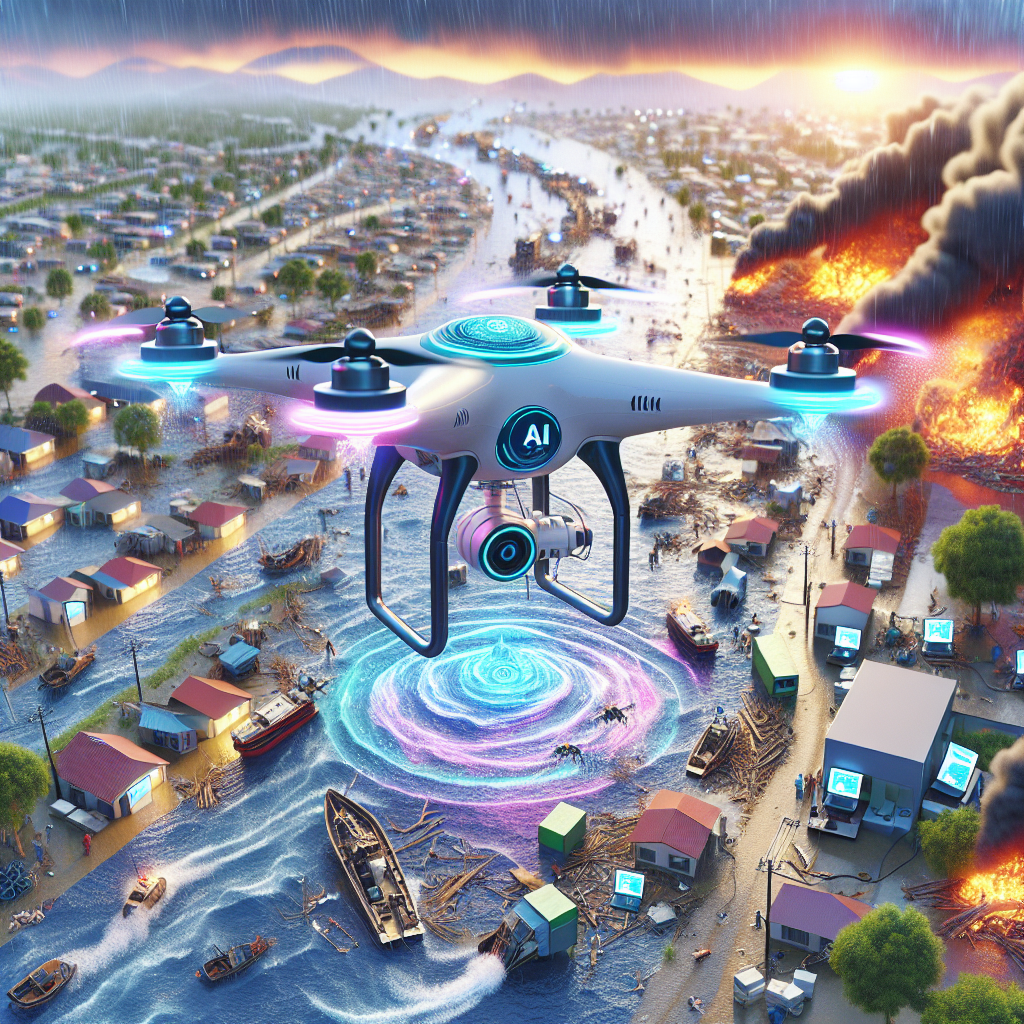In recent years, artificial intelligence (AI) has been increasingly used in disaster response efforts to improve the efficiency and effectiveness of relief operations. AI-driven solutions have the potential to revolutionize disaster response by providing real-time data analysis, predictive modeling, and automated decision-making capabilities. In this article, we will explore the role of AI-driven solutions in disaster response and their impact on improving disaster management.
One of the key areas where AI-driven solutions are being used in disaster response is in the collection and analysis of data. By leveraging machine learning algorithms, AI systems can process large volumes of data from various sources, such as satellite imagery, social media posts, and sensor networks, to identify patterns and trends that can help in predicting and monitoring disasters. For example, AI algorithms can analyze satellite images to detect changes in land cover that may indicate the onset of a natural disaster, such as a wildfire or a flood.
Another important use of AI in disaster response is in predictive modeling. By analyzing historical data on past disasters and combining it with real-time information, AI systems can generate predictive models that can forecast the likelihood and severity of future disasters. These models can help emergency responders and policymakers to better prepare for and respond to disasters by allocating resources more effectively and implementing preventive measures in high-risk areas.
AI-driven solutions are also being used to automate decision-making processes in disaster response. For example, AI-powered chatbots can provide real-time information and assistance to affected populations, helping them to navigate evacuation routes, access emergency services, and receive critical updates on the situation. AI systems can also help emergency responders to prioritize and coordinate their efforts by analyzing data on resource availability, population movements, and infrastructure damage.
Overall, the use of AI-driven solutions in disaster response can significantly improve the speed, accuracy, and effectiveness of relief operations, leading to better outcomes for affected populations. By leveraging the power of AI, emergency responders can make informed decisions, allocate resources more efficiently, and save lives in times of crisis.
Frequently Asked Questions (FAQs):
Q: How can AI help in improving disaster preparedness?
A: AI can help in improving disaster preparedness by analyzing historical data, identifying high-risk areas, and generating predictive models that can forecast the likelihood and severity of future disasters. This information can help policymakers and emergency responders to allocate resources more effectively and implement preventive measures in vulnerable areas.
Q: What are some examples of AI-driven solutions used in disaster response?
A: Some examples of AI-driven solutions used in disaster response include automated data analysis tools, predictive modeling algorithms, and chatbots that provide real-time information and assistance to affected populations. These solutions can help in monitoring disasters, predicting their impact, and coordinating relief efforts.
Q: How can AI systems help in coordinating relief efforts during a disaster?
A: AI systems can help in coordinating relief efforts during a disaster by analyzing data on resource availability, population movements, and infrastructure damage. By automating decision-making processes and providing real-time information to emergency responders, AI systems can help in prioritizing and coordinating relief efforts more effectively.
Q: What are the challenges of using AI in disaster response?
A: Some of the challenges of using AI in disaster response include the need for large amounts of high-quality data, the potential for bias in algorithmic decision-making, and the lack of transparency in AI systems. It is important for policymakers and emergency responders to address these challenges to ensure the ethical and effective use of AI in disaster response.
In conclusion, the role of AI-driven solutions in disaster response is becoming increasingly important in improving the efficiency and effectiveness of relief operations. By leveraging the power of AI, emergency responders can make informed decisions, predict the impact of disasters, and coordinate relief efforts more effectively. As AI technology continues to evolve, it is essential for policymakers and emergency responders to embrace AI-driven solutions and harness their potential to save lives and mitigate the impact of disasters.

